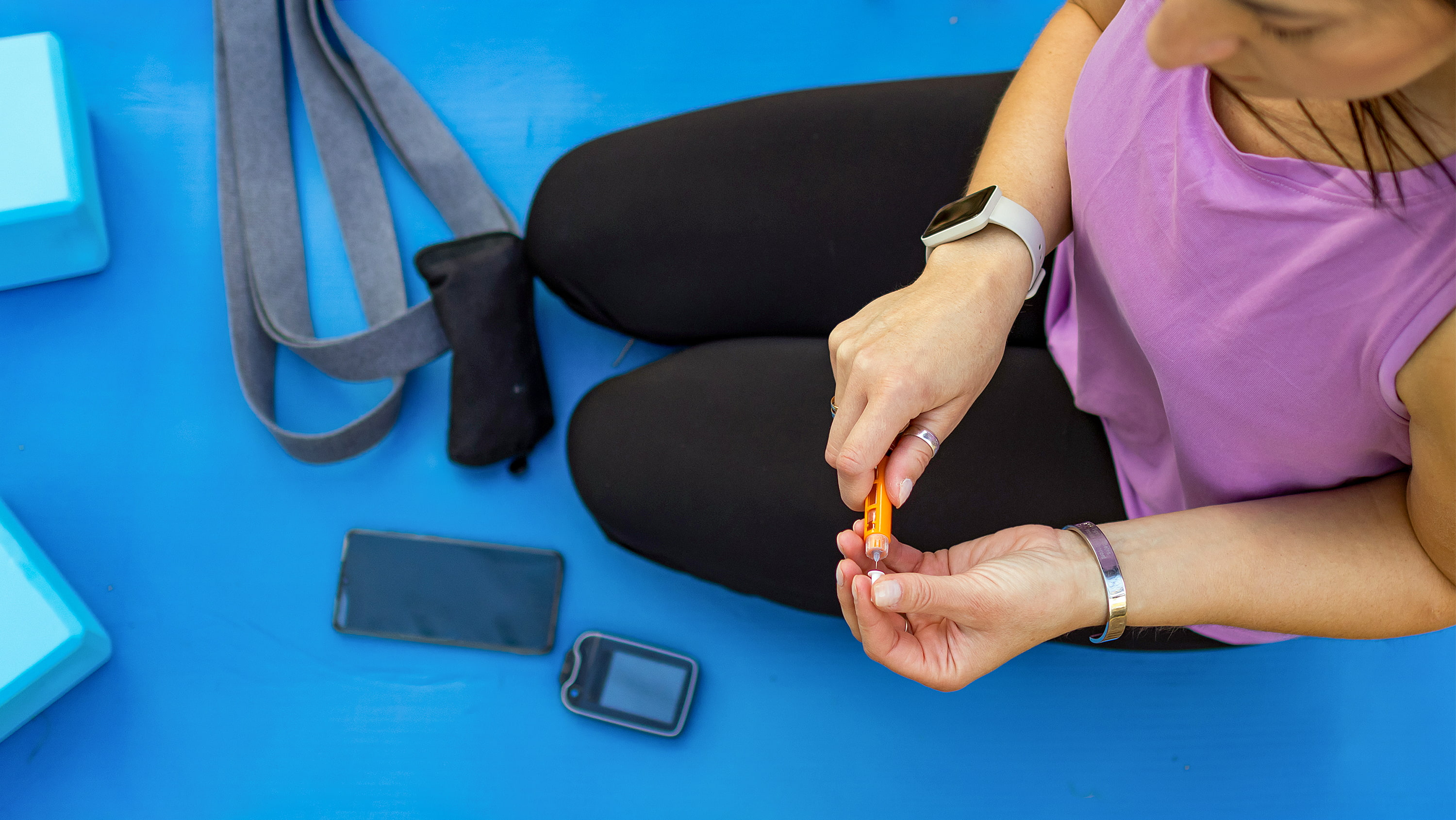Adults with Type 1 diabetes should perform aerobic cooldowns to manage high blood sugar after intense exercise where glucose levels might rise, according to current guidelines for managing the disease. However, this recommendation has never been empirically tested — and recent research out of the University of Alberta could offer a better solution.
“We have more knowledge now on how to best stop blood sugar from going too low, recommendations on how to adjust insulin and how many carbohydrates to take, but we’re still working on the post-exercise period,” says Jane Yardley, an adjunct professor with the Faculty of Kinesiology, Sport, and Recreation and Augustana Campus and associate professor at the University of Montreal.
Yardley and graduate student Reid McClure, first author on the paper, led a recent study to address that knowledge gap by investigating the impact of fasted resistance exercise (exercising on an empty stomach) on post-exercise hyperglycemia (high blood sugar) in adults with Type 1 diabetes. McClure, now a PhD student, did all data collection for the project, which was his master’s thesis. Researchers found that while an aerobic cooldown can reduce glucose levels right after exercising, the effect doesn’t last long, so it’s not an ideal standalone solution for hyperglycemia management.
Persistent or untreated hyperglycemia in people with diabetes can lead to health issues like kidney and nerve damage, eye disease or a condition called ketoacidosis (which can lead to a diabetic coma). Severe hyperglycemia can even lead to death, so having accurate, evidence-based management strategies is critical, Yardley stresses.
How exercise affects glucose
In most people’s bodies, there’s a constant flux of two hormones called insulin and glucagon. Insulin brings glucose levels down and stores it in the body’s cells, while glucagon retrieves it from the liver. Together they maintain a balance, preventing blood sugar from going either too low or too high. People with Type 1 diabetes don’t produce insulin naturally, which makes achieving this balance much more challenging. Exercise complicates things because of how it changes blood sugar levels.
“When you start to exercise, your cells will actually suck in glucose without even having insulin in circulation,” says Yardley. “So what your body does naturally, if your pancreas works correctly, is let your liver release glucose at the rate your cells are taking it up. So you still keep a fairly consistent level of glucose.”
People with Type 1 diabetes often experience a drop in glucose during exercise when they have too much insulin in circulation. Compared with naturally produced insulin, synthetic insulin remains in circulation longer.
In that case, Yardley says, “You’ve got too much insulin, you’ve got that extra uptake from the exercise causing glucose to go into cells, and this all brings the glucose levels down in the blood very quickly,” says Yardley. “After exercise we tend to see a big rebound in blood glucose.”
Glucose starts climbing, and with the body in the fat-burning state that happens after many types of exercise, insulin also becomes less effective.
“The body doesn’t store that glucose anymore, and even though your body is still releasing it, it’s not going into the cells.” And blood glucose levels rise as a result.
The benefit of multiple management strategies
Participants in the study exercised on an empty stomach first thing in the morning. All participants completed two identical resistance exercise sessions, one followed by a low-intensity 10-minute cooldown on a stationary bicycle, the other by 10 minutes of sitting.
Researchers compared the changes in participants’ blood glucose levels during the two sessions, and also tracked the outcomes on participants’ continuous glucose monitor devices over 24 hours after the exercise sessions.
They found that an aerobic exercise cooldown after a workout doesn’t lower glucose for long — meaning it isn’t an ideal standalone solution for managing hyperglycemia.
However, correcting exercise-induced hyperglycemia solely with an insulin dose isn’t the best solution either — it can be challenging to determine the exact dose needed since the glucose spike is not from something easily quantifiable, like consuming too many carbohydrates. “It’s high from everything else that’s going on metabolically, and you don’t know how sensitive you are to that insulin after exercise, so it’s a bit less predictable,” Yardley explains.
The researchers propose that the most effective management strategy for hyperglycemia in people with Type 1 diabetes may be pairing an aerobic cooldown with a small dose of insulin to harness the best of both strategies.
Removing barriers to exercise
It’s no secret that exercise is beneficial for a wide range of health conditions. However, encouraging people with Type 1 diabetes to increase their activity levels without also providing evidence-based recommendations on managing glucose levels isn’t setting them up for success. Guidelines for diabetes are updated often, Yardley explains, so any new findings have the potential to shape future recommendations.
“Exercise and physical activity are extremely important for everyone. What we’re trying to do is remove some of the barriers for people with Type 1 diabetes.”
